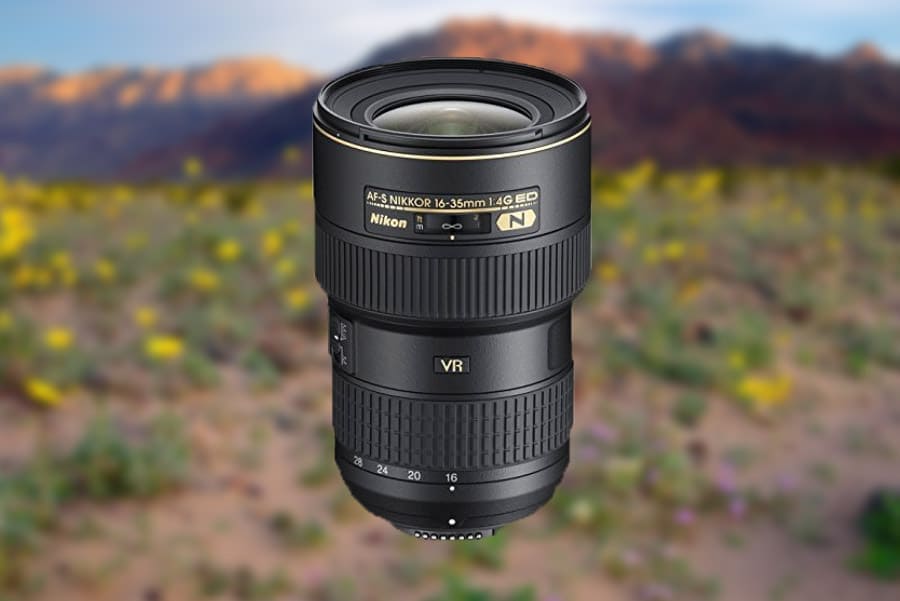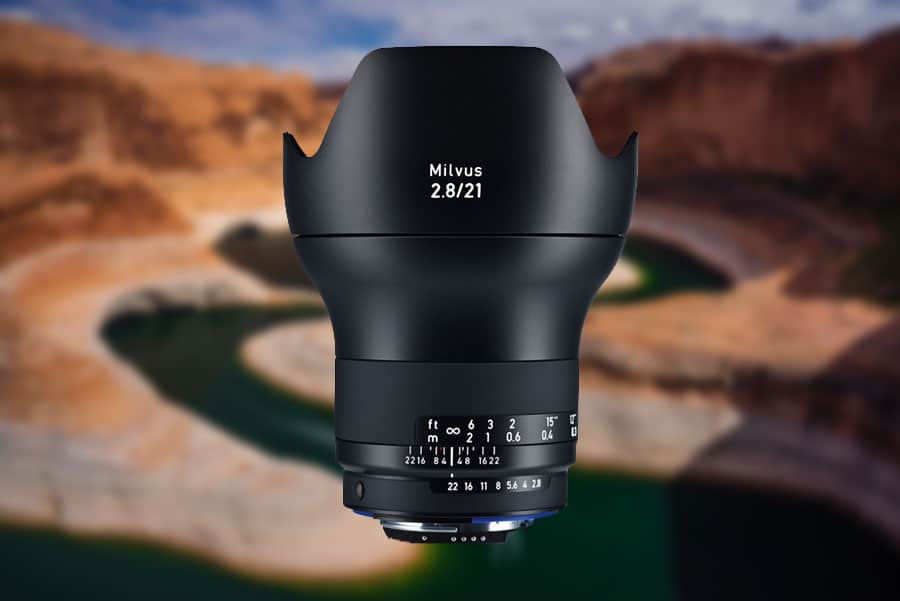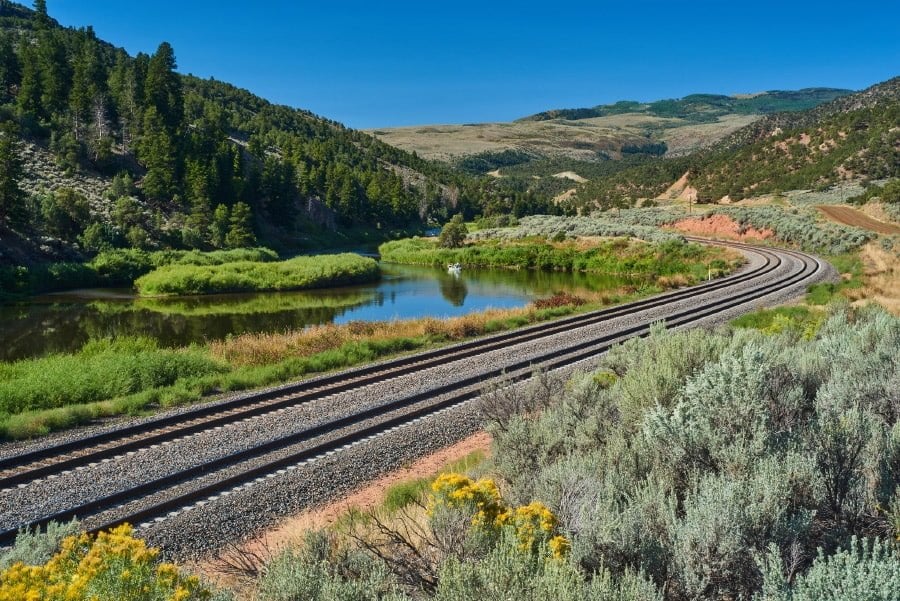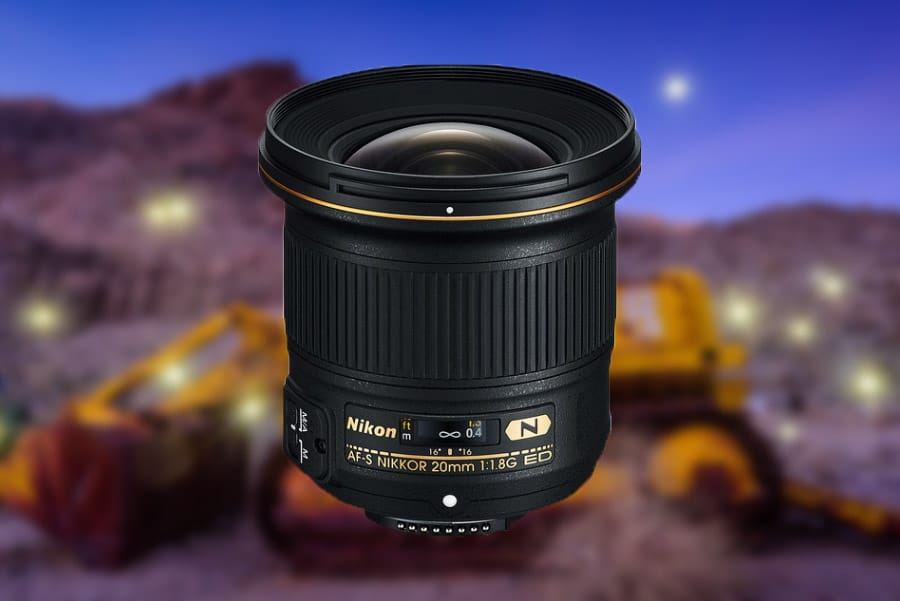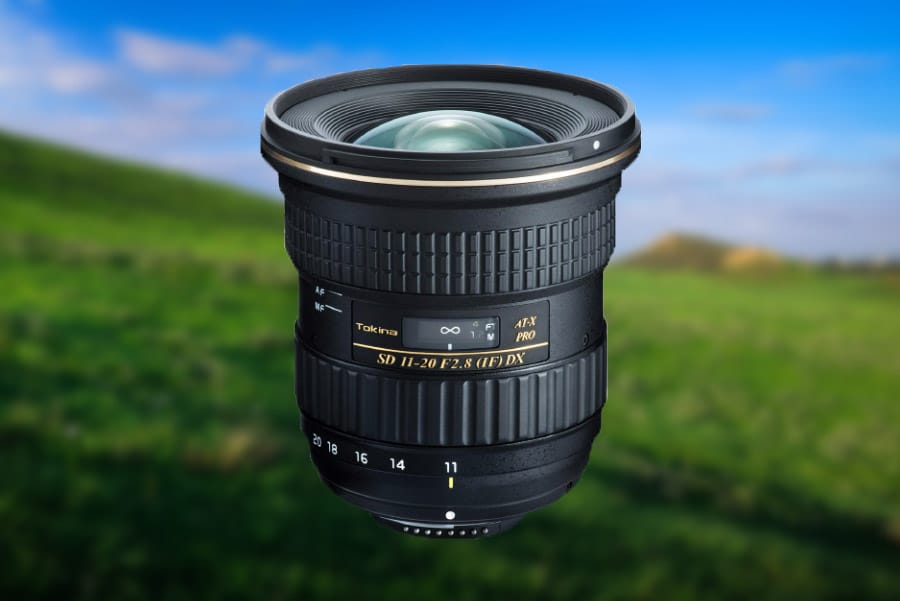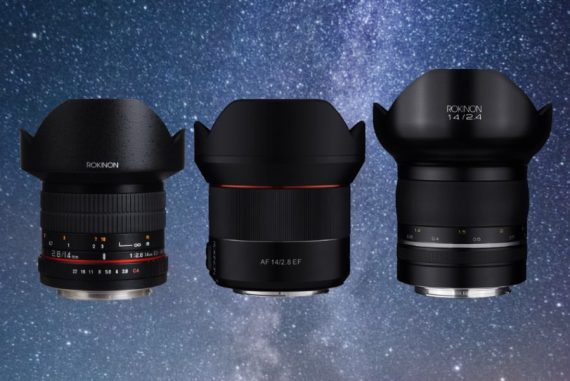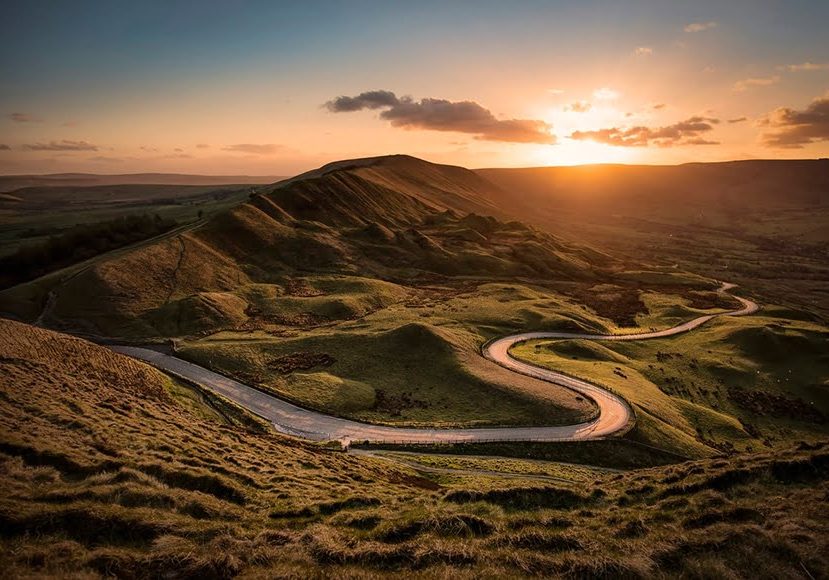
Best Nikon Lenses For Landscape Photography
Check out this in-depth guide on recommended Nikon lenses for landscape photography. Learn which Nikon DX and FX lenses are best bang for the buck.
If you’re an outdoor shooter, choosing the best Nikon lens for landscape photography is obviously very important.
Deciding on a focal length, a maximum aperture, the desired sharpness… there are several factors at play if you want to make the most of the megapixels on offer by your camera.
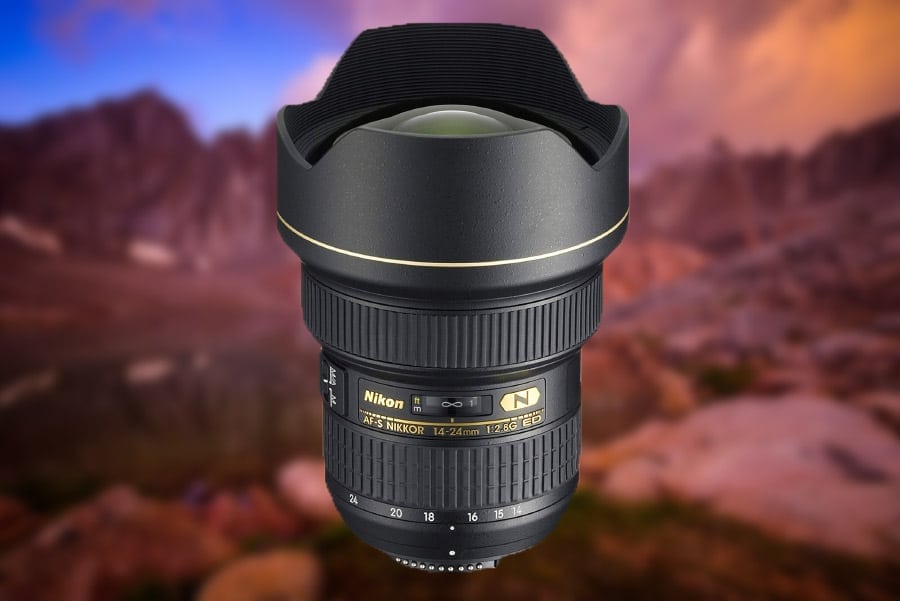
Legendary lens that's worth the spend thanks to its incredible image quality, performance and durability.
Landscape photography can involve all types of lenses. Of course, you can photograph a landscape with a standard or telephoto lens, but for simplicity, in this article, we are going to stick to just wide-angle lenses that are excellent choices for shooting landscapes.
We’ll talk about both zoom and prime lenses, for both FX full-frame and DX APS-C cameras… and I’ll introduce several great value third party options to go alongside your Nikon lenses.
Whether you have a big budget or a small budget, this comprehensive list of lenses has got you covered – you should also see this complementary guide to the best camera for landscape photography.
Let’s dive right in with our recommendations of this year’s best Nikon lenses for landscape photography.
Table of Contents
Best Nikon Full-Frame Zoom Lenses for Landscape Photography
Nikon 14-24mm f/2.8 G
Compatible Format: FX, DX
Diaphragm Blades: 9, rounded
Minimum Focus Distance: 11.02 in. ( 28 cm)
Filter Size: N/A (you must use an adapter)
Stabilization: No
Dimensions (Diameter x Length): 3.86 in. x 5.2 in. (98 mm x 131 mm)
Weight: 2.14 lbs. (969 g)
This is the lens that put Nikon on the map for wide-angle landscape photography. It was incredible in 2007 when it was released, and the images it makes are still jaw-dropping today. It’s a legend, and for good reason.
By employing a wide angle, you can make the most of using the s curve in photography to highlight various compositional elements in your frame.
The Nikon 14-24mm f/2.8 G is probably the lens behind many of the best digital era landscape photographs that you’ve seen. Whether you shoot astro-landscapes with the aperture wide open at f/2.8, or you shoot traditional landscapes at f/8-11, you’ll be very impressed by the overall image quality.
It’s sharp, of course, but it also offers shockingly low distortion, decently low vignetting, flare and aberrations, and rather beautiful sunstars.
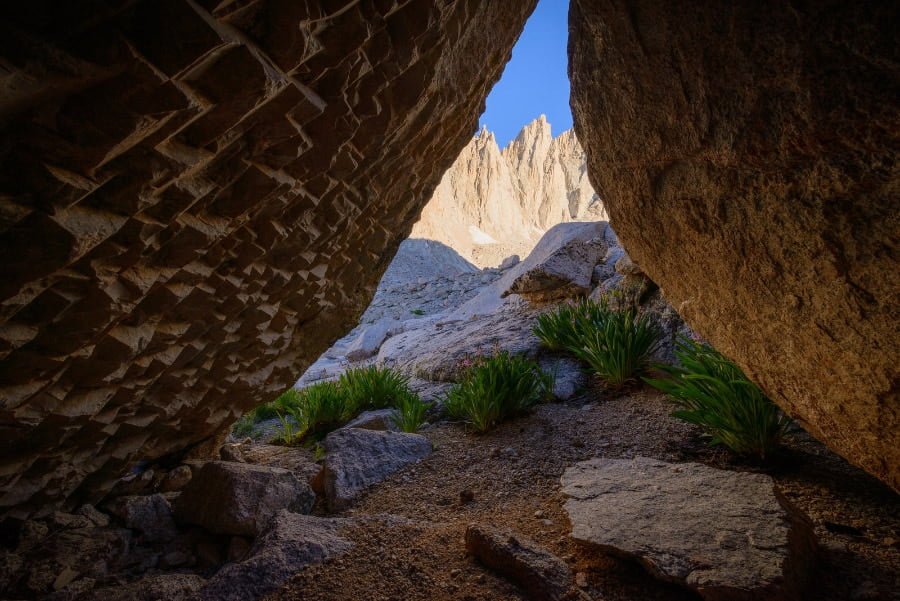
Nikon 14-24mm f/2.8 G, Nikon D800e | 1/40 sec, f/16, ISO 100
Admittedly, if you’re a truly merciless pixel-peeper then you might prefer a newer alternative, for the highest level of fine detail. We’ll list some of those options next.
However, many landscape photographers will continue to consider this the best lens they ever bought, for its combination of durable reliability and overall performance.
The great thing about a lens that is 12 years old is that you can find them very affordably if you shop used or refurbished. The advantage of buying a tried-and-true lens is, you know you’re adding a durable, trustworthy piece to your kit.
The Nikon 14-24mm f/2.8 is weather-sealed, and (mostly) metal and one of the best lenses for landscape photography I’ve used.
Other recommendations:
This is the newest landscape photography lens in Nikon’s lineup, made only for the new Z mount FX mirrorless cameras. Although it is an f/4 zoom instead of an f/2.8 zoom, it poses an exciting new option for Nikon landscape photographers: it’s the first 14mm ultra-wide zoom that is extremely portable and accepts standard 82mm filters!
This is simply unheard of, and this 14-30mm f/4 will likely be wildly popular for landscape photography.
By comparison, most ultra-wide f/2.8 zooms that get to 14mm on the wide end, or even 15mm or 16mm, (including the Nikon 14-24mm f/2.8 that we just mentioned) are about a pound heavier, and don’t accept front filters without third-party adapters which take up a ton of extra space in your camera bag.
If you’re OK with buying a third-party lens for your full frame Nikon DSLR or mirrorless FX camera, then any serious Nikon landscape photographer would be unwise to overlook this lens. Newer than the Nikon 14-24 by a whole decade, it offers bitingly sharp images even on your 36-45 megapixel Nikon bodies, along with impressive image quality in all other respects.
It is a massive, hefty lens, however, and shouldn’t be your first choice if you’re a lightweight traveler who is just looking for an all-around travel landscape lens. For those of you who don’t mind the extra pound of weight, though, it’s absolutely worth investing in.
For the landscape photographers with an up-close, in-your-face style of subject composition, sometimes you can never go wide enough. The Sigma 12-24mm f/4 is the only ultrawide zoom for Nikon landscape photographers who want to go wider than 14mm, and that’s OK because it does provide incredible image quality.
Like its 14-24mm f/2.8 sibling, however, this lens is very large and heavy. It’s not your average walk-around landscape photography lens, it is a serious photographer’s specialized tool.
Best Affordable Full-Frame Zoom Lens For Nikon Landscape Photography
Nikon 16-35mm f/4 VR
Compatible Format: FX, DX
Diaphragm Blades: 9, rounded
Minimum Focus Distance: 11.42 in. ( 29 cm)
Filter Size: 77mm
Stabilization: Yes
Dimensions (Diameter x Length): 3.2 in. x 4.9 in. (82 mm x 125 mm)
Weight: 1.5 lbs. (680 g)
This is Nikon’s all-around landscape photography lens, offering a great balance of affordability, portability, and overall sharpness.
Plus, with the VR image stabilization, you might be able to hand-hold a few shots and forego your tripod at least some of the time. This might come in handy when hiking in the mountains, or doing casual travel photography.

Nikon 16-35mm f/4 VR, Nikon D600 | 1/125 sec, f/11, ISO 250
If you listen to the pixel-peepers, you’ll hear claims that this lens isn’t as sharp as the exotic options.
However, keep in mind that most landscape photography happens at smaller apertures like f/11 anyways, where lenses are largely equal except in the extreme corners.
In fact, if you aren’t the type of photographer who meticulously scrutinizes every corner of every image, you might be wasting your money on lenses that are more expensive; just get the Nikon 16-35mm f/4 VR and go take beautiful pictures!
You’ll be glad you have a lighter weight lens on that long hike you are hoping to do.
Other recommendations:
If you’re looking for an affordable ultra-wide zoom but you still want an f/2.8 aperture and as wide of a focal length as possible, the Tamron 15-30mm f/2.8 VC take care of you. The G2 version is slightly better, but both versions are incredible.
This rather new lens is impressive because it offers an f/2.8 aperture at its wide end, allowing it to do double-duty as both a traditional landscape photography lens and a slightly more exotic nightscape photography lens. It’s also one of the lightest, most compact full-frame lenses to offer f/2.8 on the wide end, for you astro-landscape shooters out there.
This lens is certainly the best value winner for all Nikon FX landscape shooters. It is the most affordable of all the affordable options, and is also quite light and compact, yet it still delivers great images in a robust, durable package.
Best Exotic Full-Frame Prime Lenses For Nikon Landscape Photography
Zeiss Milvus 21mm f/2.8
Compatible Format: FX, DX (both manual focus)
Diaphragm Blades: 9
Minimum Focus Distance: 8.66 in. ( 22 cm)
Filter Size: 82mm
Stabilization: No
Dimensions (Diameter x Length): 3.74 in. x 3.66 in. (95 mm x 93 mm)
Weight: 1.6 lbs. (735 g)
It may not be a Nikon lens, but Zeiss lenses are certainly just as exotic, and the Distagon optical design is truly legendary among all landscape photographers.
This Zeiss Milvus 21mm f/2.8 is a perfect landscape photography prime lens for truly serious Nikon shooters because it is a perfect wide-angle focal length.
In general, 20mm or 21mm is a great wide-angle focal length for a lot of landscape scenes. Often times, 24mm or 28mm just aren’t wide enough, and yet 14mm or 16mm are actually too wide.
If you’re looking for a prime lens to shoot landscapes with, ~21mm is a great place to start.
The Zeiss Milvus line also offers incredibly durable metal construction, beautifully smooth manual focus operation with hyperfocal markings, and 82mm filter threads.
Also, despite being a manual focus lens, it has electronic contacts for your Nikon camera so that you can get the correct EXIF data for your aperture and focal length.
Other recommendations:
If you want to go ultra-wide, and yet maintain the absolute sharpest landscape images corner-to-corner on your high-megapixel Nikon FX camera, then the Rokinon 14mm f/2.4 SP offers the best image quality without getting truly “enormous” and heavy like most of the ultra-wide zooms that offer a 14mm focal length.
This lens also offers incredibly smooth manual focusing, though it lacks hyperfocal markings. It also offers electronic contacts for EXIF information.
Sigma’s Art series 14mm prime is as big and heavy as a lot of ultra-wide zooms, due to its very fast aperture, and if you need great sharpness and low vignetting at f/2.8, then go with this lens. If you plan to spend all your time at f/8-11, however, just go with a Rokinon/Samyang.
Best Affordable Full-Frame Nikon Prime Lenses For Landscape Photography
Nikon 20mm f/1.8 G
Compatible Format: FX, DX
Diaphragm Blades: 7, rounded
Minimum Focus Distance: 7.87 in. ( 20 cm)
Filter Size: 77mm
Stabilization: No
Dimensions (Diameter x Length): 3.2 in. x 3.2 in. (82 mm x 80 mm)
Weight: 12.5 oz. (355 g)
Don’t let the “affordable” category fool you; the Nikon 20mm f/1.8 G is one of the best choices for landscape photography regardless of price, especially if portability is important to you.
In fact, this is one of the lightest, smallest lenses available that is still sharp enough to handle current-generation landscape full-frame cameras.
Wide-open at f/1.8 or f/2.8, this lens makes a fantastic nightscape photography lens. Stopped down to f/8 or f/11, it is one of the sharpest lenses you can get for traditional landscape photography.

Nikon 20mm f/1.8 G, Nikon D750 | 1/25 sec, f/16, ISO 100
Despite its partly plastic construction, (the front filter threads are plastic, the rear mount is metal) this lens is extremely durable and ready for professional abuse. It does have a mount gasket, which could save your camera if you shoot in the rain a lot.
Every FX Nikon landscape photographer should have such a versatile, compact lens in their bag. In fact, this lens even makes a great 2nd addition to your bag even if you already have an enormous, heavy ultra-wide zooms. You may want its easy access to 77mm filters, too.
Other recommendations:
This Nikon lens is also incredibly sharp when stopped down, making it just as good as the expensive, exotic options if you plan to mostly shoot landscapes at smaller apertures. Unlike the expensive, exotic options, this lens is extremely compact and accepts similarly compact 72mm front filters.
Once again, despite being in the “affordable” category, this lens is a top performer that matches even the best “exotic” 14mm lenses, when stopped down for landscape photography. It just happens to be really affordable too!
Best Exotic DX Lenses For Nikon Landscape Photography
Tokina 11-20mm f/2.8 DX
Compatible Format: DX only
Diaphragm Blades: 9
Minimum Focus Distance: 11 in. ( 28 cm)
Filter Size: 82mm
Stabilization: No
Dimensions (Diameter x Length): 3.5 in. x 3.62 in. (89 mm x 92 mm)
Weight: 1.2 lb. (560 g)
If you’re a serious landscape photographer who is using a Nikon DX camera, this is the best lens you can get.
The Tokina 11-20mm f/2.8 DX is sharp enough to match even the full-frame competitors, and with its f/2.8 aperture, you can certainly also use it to capture beautiful astro/nightscape images.
Unlike most full-frame ultra-wide f/2.8 lenses that achieve this angle of view, (equivalent to about 16mm on full-frame) this lens offers the convenience of accepting standard 82mm front filters and is decently portable overall.
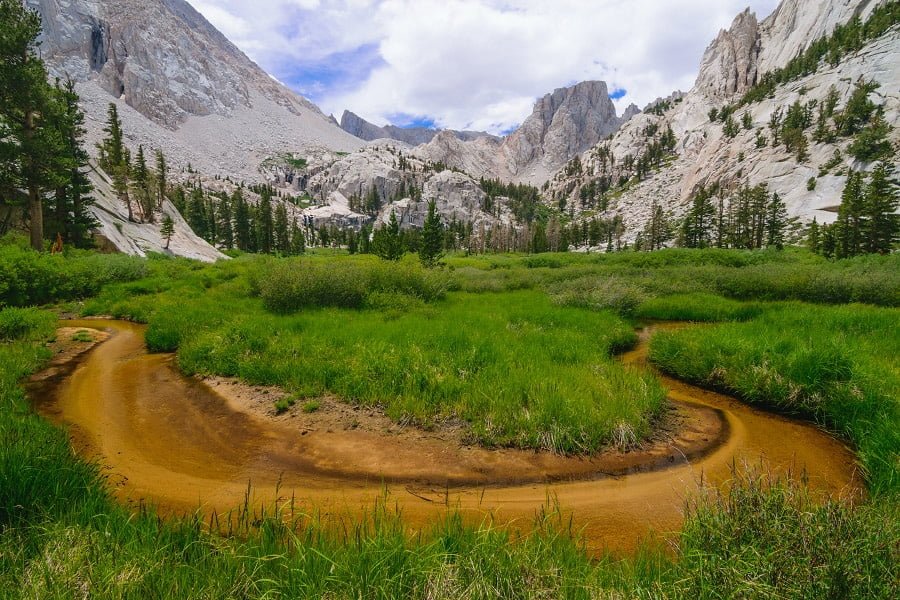
Tokina 11-20mm f/2.8, Nikon D5300 | 1/100 sec, f/11, ISO 100
Also, the Tokina 11-20mm f/2.8 is built extremely durable. With quite a bit of metal in its construction, this lens can serve you well for many years.
Other recommendations:
If you’d rather have a faster aperture than an extreme wide-angle, go with this Tokina DX option lens instead. The f/2 aperture makes it an amazing astro/nightscape photography lens. It also accepts 82mm filters and is decently affordable and portable.
This was the first-ever f/1.8 zoom, and it deserves a place on any list of “exotic” wide-angle lenses for APS-C (DX) cameras. 18mm is not quite wide enough for some landscape photographers, but if you shoot panoramas then you can’t beat this lens’ corner-to-corner sharpness at every aperture.
Best Affordable Nikon DX Lenses For Landscape Photography
Nikon AF-P DX Nikkor 10-20mm f/4.5-5.6 G VR
Compatible Format: DX only
Diaphragm Blades: 7, rounded
Minimum Focus Distance: 8.66 in. ( 22 cm)
Filter Size: 72mm
Stabilization: Yes
Dimensions (Diameter x Length): 3.03 in. x 2.87 in. (77 mm x 73 mm)
Weight: 8.1 oz. (230 g)
You just can’t beat this lens for its affordability and portability. The only thing more impressive than the affordable price is its incredible image quality!
The Nikon 10-20mm f/4.5-5.6G VR delivers stunningly sharp images that even your 24-megapixel Nikon DX DSLR will be happy with.
The only caveat is that it’s an AF-P lens which means it won’t be compatible with a lot of the older Nikon camera bodies.
As long as you update your camera’s firmware, however, the 10-20mm DX is fully compatible with the most recent 1-2 generations of DX Nikon cameras.

Nikon 10-20mm f/4.5-5.6 DX, Nikon D7500 | 1/250 sec, f/11, ISO 100
Also, be sure to take good care of the Nikon 10-20mm f/4.5-5.6 DX, because it’s got a lot of plastic parts. That’s great for portability, just don’t drop it and you’ll get many years of life and beautiful images out of it.
Other recommendations:
Tokina’s affordable DX Nikon offering is much bigger, heavier, and durable than Nikon’s 10-20mm, but it’s a lot more rugged and durable, with a constant f/4 aperture and stunningly sharp images from corner to corner. 12mm is a respectable ultra-wide focal length on DX cameras, and 28mm is good enough that this could easily be the only lens you need for Nikon DX landscape photography.
Tamron 10-24mm f/3.5-4.5 Di II VC
Tamron’s affordable DX Nikon option is not that much larger or more expensive than the Nikon 10-20mm AF-P, but it’s very sharp and built to last. As a slightly older lens, you may also be able to find it used or refurbished for very cheap.
How to Choose a Nikon Lens to Photograph Landscapes

Nikon 20mm f/1.8 G, Nikon D750 | 1/180 sec, f/8, ISO 100
There are a few questions to consider when picking a wide-angle lens for landscape photography on your Nikon camera. The most important ones are these:
1. What focal length fits your style?
Some landscape photographers are happy with a wide-angle lens of 24mm, or 20mm, while others prefer ultra-wide focal lengths such as 14mm or 12mm. It’s a question of taste and personal style, because any of those focal lengths are capable of amazing imagery.
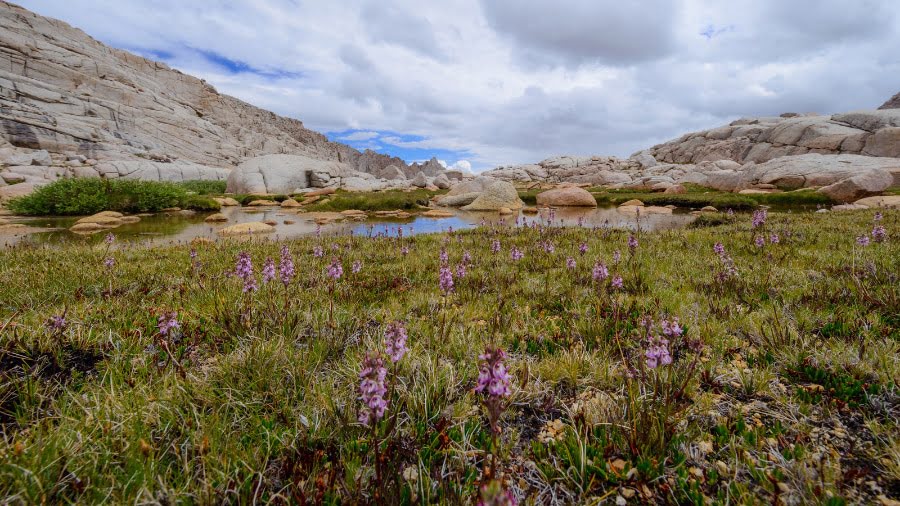
Nikon 14-24mm f/2.8 G, Nikon D800e | 1/125 sec, f/16, ISO 100
By the way, ultra-wide lenses aren’t just for fitting more into the scene, they’re also great at creating a wild sense of scale with close-up and distant objects.
2. Do you need a fast-aperture lens?
If you plan to shoot everything from a tripod, in some cases, the answer is no.
So, if you’re shooting at f/11, most modern f/4 zooms are just as sharp as their f/2.8 counterparts, and you’re able to save a lot of money by buying the ‘slower’ equivalent.
Of course, if you plan to do some nightscape photography too, then you’ll definitely want a lens with a maximum aperture of f/2.8 or faster.
3. Does your lens need image stabilization, aka VR?
This is another feature that is not very important for most landscape photographers who shoot from a tripod all the time. In fact, it can even be an annoyance if you ever accidentally leave the VR on when it should be turned off.
The only time stabilization is a good idea is if your style of landscape photography is more travel or adventure-oriented, in which case you may very well find yourself hand-holding a lot of photos, and needing the help of stabilization in order to get tack-sharp images.
4. Do you need a prime or a zoom lens?
It used to be very true that primes were always sharper than zooms, however, these days zooms are so sharp thanks to modern computer-aided optical design, that it’s almost a non-issue. In other words, primes may still be a little bit better, but both are truly incredible options.
Landscape photographers, in particular, have trusted wide-angle zoom lenses for many years now because they offer a versatile range of focal lengths. Some landscape photographers do still prefer primes, though, for their sharpness and image quality, or their portability…
5. Do you need a lightweight, compact lens?
The size and weight of your lens will be a factor, depending on what types of travels and adventures you enjoy. Some people are happy to have a few extra kgs in their camera backpacks, while others need to have the lightest gear set up to be able to travel on planes without checking in luggage, or go backpacking in the mountains.
Of course, if you want maximum sharpness and a very fast aperture in your lens, then that will require a lot of glass, and you won’t have much of a choice- your lens is going to be big and heavy.
For me, the quality of the final image is of utmost importance, so a little extra size/weight isn’t a big deal. Or, as a serious landscape photographer, I’d love to own both an “exotic” landscape lens, and a cheap, portable one!
6. How much do you want to spend?
Ah, the elephant in the room! Lenses can range from hundreds to thousands of dollars, and it’s usually the case that you get what you pay for. However, there are certainly some real gems that don’t cost much, but deliver truly impressive results.
I’ve included a few “exotic” lens options in this guide for those of you who are ready to invest in the best, and also some more budget-friendly options if you’re just getting started.
One thing’s for sure – you can definitely get a Nikon or lens that offers great bang-for-the-buck and is great for landscape photography… so don’t apply for a new credit card just yet! ;-)
Conclusion

Sigma 14mm f/1.8 Art, Nikon D750 | 1/20 sec, f/11, ISO 100
It doesn’t matter if you have very little money to spend, or if money is no object; as a Nikon landscape photographer, you have many great lenses to choose from.
In some cases, the best lens for your Nikon camera may indeed be a third-party option, but in many cases, Nikon has got you covered, whether your system is FX or DX DSLR cameras. If you’re looking for a future-proof solution, Nikon’s Z mirrorless mount (and the impressive new Z 14-30mm f/4 S) could be a next-generation landscape photographer’s dream!
Now that your landscape photography lens shopping is all done, it’s time to plan your next outdoor adventure! Just make some room in your camera bag for what will probably be your new favorite lens.

Legendary lens that's worth the spend thanks to its incredible image quality, performance and durability.





